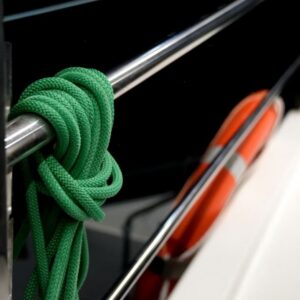
Ropes might seem basic, but they’re super important in lots of places: boats, lifting stuff, tree work, rescues, and factories. Things have really changed with what they’re made of, how they’re made, and what people expect from them. Now that everyone wants things safe, green, and done right, companies like Yale Cordage are stepping up with fancy fibers, cool weaving, and smart designs.
This piece is all about what’s going on with ropes today, what’s new, what problems there are, and how new rope tech is making things safer and better for the planet.
Rope Today: More Popular, New Materials, and Why
The rope biz is getting bigger because boats, energy, building stuff, and safety gear all need it. One report says the world rope market will jump from $14.68 billion in 2025 to over $24.06 billion by 2035, growing about 5.1% each year.
Synthetic rope (the high-tech stuff) is growing the fastest. One study says the synthetic rope market will go from $1.72 billion in 2024 to $1.81 billion in 2025 (up 5.5%), and then to $2.39 billion by 2029. Other folks think it’ll grow even faster, maybe around 6.2% each year from 2025 to 2031.
This growth is partly because synthetic ropes are replacing old steel cables. They’re lighter, don’t rust, and are easier to handle. But steel cables are still around and growing a bit too (maybe 2.8% each year in some places).
Besides getting bigger, here’s what else is happening:
Money and getting supplies: Many rope makers buy fibers or machines from other countries, so prices can change a lot depending on what’s going on in the world.
People want good stuff: Customers don’t just want strong ropes. They want them to last long, not get worn out, stand up to the sun, and stretch just right.
Special ropes: Instead of one-size-fits-all, many jobs need ropes made just for them – to handle heat, chemicals, saltwater, or fire.
Where the Cool Ropes Are Used
Here’s where new rope ideas are most important:
Boats and the Sea
Out on the water, ropes have it rough – saltwater, lots of use, sun, and wear. Synthetic mooring lines and lifting slings are replacing steel cables on boats and underwater because they float, are lighter, and break in a safer way.
Lifting Heavy Stuff
When lifting heavy things, ropes need to be strong, easy to control, and tough. New synthetic lifting slings can be much lighter, making them easier to use and cheaper to move around.
Safety, Rescues, and Climbing
For tree climbers, rescuers, and rope access teams, being safe is the top thing. Ropes must meet tough rules for strength, stretch, and heat resistance. New stuff like heat-proof coatings and special rope designs are becoming more common.
Factories and Building
Windmills, bridges, elevators, and cable cars all use ropes for getting around, holding things, and moving loads. As we build more stuff, we need more good ropes.
What’s New and Tricky with Ropes
What Fibers to Pick
Strong plastic (HMPE), aramid, polyester, nylon, and other fancy fibers all have good and bad points when it comes to strength, stretch, wear, and price. Now, people are mixing fibers to get the best of everything without spending too much.
How They’re Made
Making ropes is now more than just twisting fibers. It’s about weaving them just right, making different layers, controlling how tight they are inside, and using coatings. Machines need to make ropes exactly the same every time, and checking the quality is super important.
Keeping Ropes Safe and Checking Them
Ropes wear out over time from the sun, rubbing, bending, chemicals, and stretching. People who use ropes now want to know where they came from, how to check them, and when to replace them. Smart ropes with sensors or tags are starting to show up, which can help predict when they’ll fail and make things safer.
Being Green
Now that companies want to be nicer to the planet, rope makers are trying too. They’re:
Using fibers that can be recycled or made from plants.
Wasting less when making ropes (cutting better, reusing scraps).
Making ropes last longer with better coatings and inspections.
Shipping lighter ropes to save fuel.
Some companies are thinking about taking back old ropes to recycle them, but it’s not easy to do on a big scale.
People Using Ropes
Ropes are just one part of a bigger picture. Picking the right rope means:
Using the right safety rules: not just using the strongest rope because it seems safer – too much stiffness or weight can be dangerous.
Knowing how to use, check, and fix ropes: many rope problems happen because people misuse them, bend them too much, or rub them against things.
Real stories: Companies often say that switching to synthetic ropes has meant less time fixing things and lower costs.
For example, on boats, synthetic mooring lines don’t rust like steel ones, which can save money in the long run.
Let’s Talk: How Rope Companies Make Ropes Better
In a world where doing things right and staying safe are key, rope companies need to do more than just make ropes. They need to work with their customers, think ahead, and help with checking ropes and deciding when to replace them.
Systems that are owned by professional rope companies, like Yale Cordage’s rope systems gives users not only premium synthetic rope but also lots of knowledge about how to use them, check them, and keep them working for a long time.
By mixing new fiber tech with real-world help, Yale Cordage can help companies use ropes that last longer, work better, and are good for the environment.
In short
Ropes might be one of the oldest tools we have, but they’re getting a serious makeover. The market’s growing fast, new materials are changing what’s possible, and everyone wants ropes that are better for the planet. Whether it’s for boats, lifting stuff, rescues, or building, using the right rope can make things safer, cheaper, and greener.








